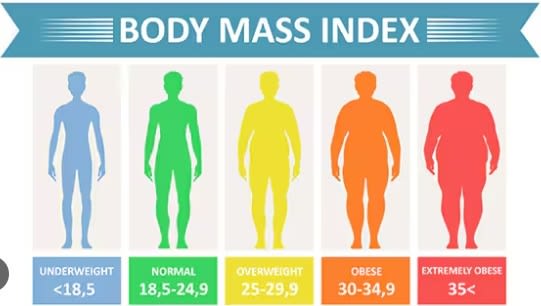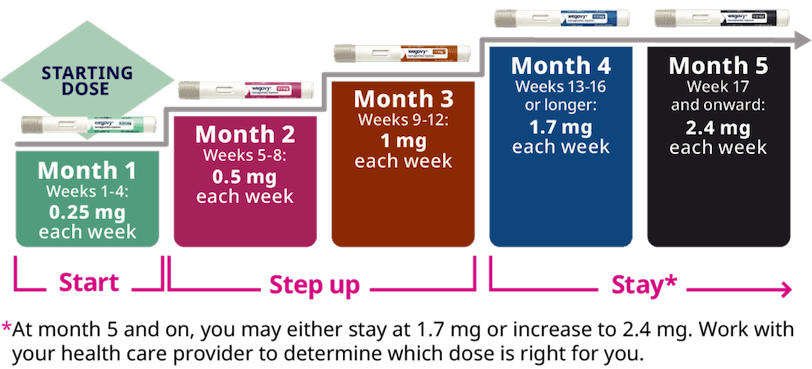Semaglutide Weight Loss: Before and After - Your Ultimate Guide to Success!
Semaglutide Weight Loss: Before and After - Your Ultimate Guide to Success!
Table of Contents
II. Getting Started with Semaglutide
III. Managing Expectations and Setting Goals
IV. Integrating Semaglutide with a Long-Term Healthy Lifestyle
V. Potential Side Effects and Safety Considerations
VI. Get Semaglutide Online through ScriptsMD
Achieving and maintaining a healthy weight is a challenge many individuals face and one of the most critical to address. Weight loss not only helps people feel more confident and healthy, it reduces the risk of serious health conditions like heart disease, diabetes, and hypertension. Finding a sustainable weight loss solution aligned with personal preferences, lifestyles, and health needs is essential.
Over the past several years, semaglutide has emerged as a promising weight loss aid. Initially developed for managing type 2 diabetes, recent studies have revealed its significant benefits exclusive to supporting weight loss, making it a game-changer for those struggling to shed excess pounds.
In this guide, we’ll explore the process of semaglutide weight loss before and after, as well as throughout the long-term journey of maintaining your new, healthier weight. Whether you’re specifically considering semaglutide or simply seeking to learn more about weight loss strategies, this guide will provide the insights you need to reach your goals.
Quick Takeaways:
- Semaglutide, initially approved as a medication for type 2 diabetes, has shown significant promise as a weight loss aid.
- It works by reducing appetite and increasing feelings of satiety, leading to effective weight management.
- Starting semaglutide requires meeting certain medical requirements, consulting a healthcare provider, undergoing a medical evaluation, and obtaining a prescription.
- Combining semaglutide with a balanced diet and regular exercise enhances efficacy and long-term weight loss outcomes.
- Managing semaglutide side effects through gradual dose adjustments and maintaining regular check-ups ensures safe and effective treatment.
What Is Semaglutide?
Semaglutide belongs to a drug class called glucagon-like peptide-1 (GLP-1) receptor agonists, designed to mimic incretin hormones that stimulate insulin release in response to food intake. This helps to regulate blood sugar levels, which is why semaglutide was originally approved as a medication for managing type 2 diabetes.
The journey of semaglutide from a diabetes-exclusive medication to a weight loss aid began with the observation of its additional benefits during clinical trials. These studies—most notably the SUSTAIN 1 and STEP 2 trials— revealed that patients using semaglutide not only experienced better blood sugar control but also significant weight loss.
This dual benefit is attributed to semaglutide's ability to reduce appetite and increase feelings of satiety, leading to lower calorie intake and gradual weight reduction.
The discovery of semaglutide’s weight loss benefits marked a significant advancement in treating obesity, especially for people who struggle with traditional weight loss methods. Semaglutide has since been approved for weight management in addition to diabetes care, offering a new and effective option for individuals seeking to achieve and maintain a healthier weight.
Getting Started with Semaglutide
To begin treatment with semaglutide, the first step is determining eligibility. Generally, semaglutide is prescribed for adults with a body mass index (BMI) of 30 or higher (categorized as obese) or a BMI of 27 or higher (categorized as overweight) with other medical conditions such as hypertension, type 2 diabetes, or high cholesterol. 3
A healthcare provider will evaluate your medical history, current health status, and weight management goals to confirm if semaglutide is appropriate for you.

Obtaining semaglutide can be done through a telemedicine service or in-person consultation with a healthcare provider. Important steps to start your treatment plan include:
- Consultation: During the consultation, your provider will review your medical history and perform necessary evaluations to determine if semaglutide is suitable for you.
- Prescription: If eligible, your provider will write a prescription for semaglutide.
- Pharmacy Fulfillment: You may fill your prescription at a pharmacy, or it may be shipped directly to your home for added convenience.
- Follow-Up: Regular follow-up appointments with your healthcare provider will ensure the treatment is working effectively and allow for any necessary adjustments to your plan.
Starting semaglutide treatment by getting the right professional medical advice and sticking to a regular monitoring schedule can help you achieve the best results in your weight loss journey.
Managing Expectations and Setting Goals
When embarking on a weight loss journey with semaglutide, it’s crucial to have realistic expectations. While semaglutide has shown significant efficacy in promoting weight loss, individual results can vary. On average, patients may experience a 5-10% reduction in body weight over a period of several months. Understanding that weight loss is a gradual process can help maintain a positive outlook and persistence. 5
Setting achievable goals is essential for sustained motivation and success. Instead of aiming for drastic changes, break your overall objective into smaller, manageable milestones. For instance, aim to lose 1-2 pounds per week. These incremental targets are more attainable and help keep you motivated as you progress.
Tracking your progress and staying motivated involves several strategies:
- Regular Weigh-Ins: Monitor your weight weekly to track progress and make necessary adjustments to your plan.
- Journaling: Keep a food and activity journal to identify patterns and areas for improvement.
- Celebrate Milestones: Recognize and celebrate small achievements to maintain enthusiasm.
- Support System: Engage with a support group or find a weight loss buddy to share experiences and encouragement.
By setting realistic personal goals, monitoring your progress, and using strategies to stay motivated, you can maximize the benefits of semaglutide and achieve long-term weight loss success.
Integrating Semaglutide with a Long-Term Healthy Lifestyle
Integrating semaglutide into your lifestyle is vital for maximizing its weight loss benefits and ensuring you can adhere to your treatment plan. Diet and exercise play a crucial role to this end.
Adopting suggested dietary changes can significantly boost weight loss efforts. Focus on a balanced diet rich in fruits, vegetables, lean proteins, and whole grains while reducing intake of processed foods, sugary beverages, and high-fat items. Portion control and mindful eating practices, such as eating slowly and recognizing hunger cues, can further support weight loss.
Exercise is equally important for achieving optimal results with semaglutide. Incorporating a variety of exercise types into your routine—from cardio to strength training to yoga and more—can avoid boredom with your exercise routine and deliver the most well-rounded weight loss benefits (e.g., reducing fat, building muscle, increasing metabolism).
Remember: Exercise can be enjoyable! Aligning your exercise routine with your lifestyle, capabilities, and fitness level is important. Activities like walking, swimming, and cycling can be just as impactful as formal fitness programs when you stick to them.
Potential Side Effects and Safety Considerations
Like all medications, semaglutide has potential side effects and health risks that must be understood by a patient before they begin using it.
Common side effects of semaglutide include nausea, vomiting, diarrhea, and constipation, which usually diminish over time. To manage these side effects, semaglutide is prescribed with a step-up dosing schedule, starting with a lower dose and gradually increasing it over time (see the example of Wegovy’s dosing schedule below).

Eating smaller, more frequent meals and avoiding fatty foods can also help to mitigate gastrointestinal issues you may experience.
Regular check-ups and monitoring are essential to ensure your treatment’s safety and effectiveness. Your healthcare providers can adjust the dosage if necessary and help address any adverse reactions promptly, ensuring a safe and effective weight loss journey.
Get Semaglutide Online through ScriptsMD
ScriptsMD offers a reliable and convenient way to obtain semaglutide for weight loss online. With access to US board-certified physicians trained in weight loss, you can receive professional guidance and prescriptions from the comfort of your home.
The process is simple: complete a free and convenient online consultation. If you’re approved, your prescription is issued, and your medication is delivered quickly and discreetly to your door. Get started with ScriptsMD today!
References
- V. R. Aroda, A. Ahmann, B. Cariou, F. Chow, M. J. Davies, E. Jódar, R. Mehta, V. Woo, I. Lingvay Comparative efficacy, safety, and cardiovascular outcomes with once-weekly subcutaneous semaglutide in the treatment of type 2 diabetes: Insights from the SUSTAIN 1-7 trials
- John Wilding, Rachel Batterham, Salvatore Calanna, et al. Once-Weekly Semaglutide in Adults with Overweight or Obesity
- Canadian Agency for Drugs and Technologies in Health Semaglutide (Wegovy): CADTH Reimbursement Review: Therapeutic area: Weight management
- Centers for Disease Control and Prevention (CDC) About Adult BMI
- Anthony Fabricatore, Bríain Hartaigh, Devika Umashanker, et al. Semaglutide 2.4 mg clinical outcomes in patients with obesity or overweight in a real-world setting: A 6-month retrospective study in the United States (SCOPE)
- Novo Nordisk Wegovy Dosing Schedule
